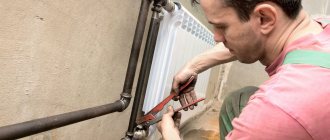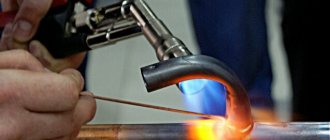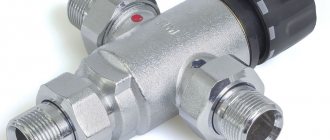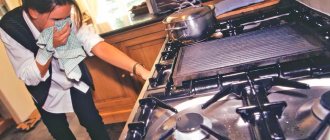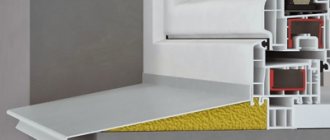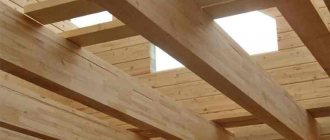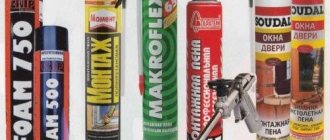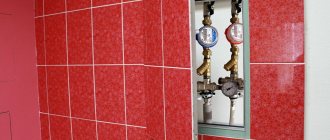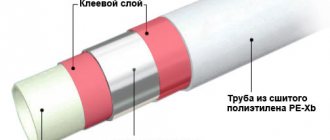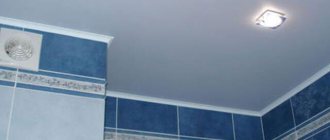A household water supply network assembled from rolled copper pipe elements is considered one of the most reliable. Of course, the development of such a highway is not a cheap pleasure. However, the high cost of the water supply system is compensated by its durability and other significant advantages.
In order to somehow save the budget of the water supply organization, you can install copper pipes yourself, having first studied the technology of the work. Do you doubt your own capabilities?
We will tell you what tools you need to prepare, we will describe step-by-step processes for assembling a copper pipeline by soldering, as well as using compression fittings. The following photo instructions and practical tips will help you avoid mistakes and set up a reliable utility network.
Connecting pipes using soldering
Let's consider connecting copper tubes with fittings followed by soldering, which can be low- and high-temperature.
In the first method, soldering is carried out at a temperature of 300 ºC. The second method is used when installing systems with high loads for industrial purposes. Couplings are used as connectors for copper pipes; tin-lead solder and flux are additionally needed.
The pipe soldering technology will be as follows:
- First of all, a pipe of a certain size is cut. This process must be carried out carefully, taking into account the size of the existing fittings.
- The ends of the pipes must be inspected - there should be no defects such as chips, cracks or burrs. If they are not eliminated, there will be problems with the tightness of the connection after all the work is completed.
- After making sure that the ends are clean, you can start connecting. Due to the fact that several pipes will be connected, and they can be of different sections, the fittings must be selected accordingly.
- Next, the end of the pipe and the inner walls of the couplings should be treated with flux, which will degrease the surfaces to obtain the highest quality connection.
- Now the end of the pipe is threaded into the copper tube connector and heated. It must be selected so that the cross-section is 1-1.5 cm larger than the cross-section of the pipe. The pipes are heated with a gas burner. The gap between the pipe and the coupling is filled with molten solder. Currently, you can find any type of solder on the market to suit your needs, so there should not be any problems with the choice.
- After the solder is evenly distributed around the circumference, the parts to be joined must be left until it has completely hardened.
At the final stage, you need to check the connectors for the copper pipes and the entire system by running water into it. At this moment, not only the system will be checked, but it will also be cleaned of flux residues, which over time can cause metal corrosion.
How to choose?
In order to properly install the system, it is necessary to take into account the features of threaded fittings. You must focus on the purpose of the pipes; if you use high-quality materials and carefully follow all the rules, you are guaranteed a high-quality connection for many years. Find out what the sizes and purposes of fittings are, use this when designing.
Selection of fittings
If you need to rotate the structure, you will need corners; if you plan to branch, be sure to purchase tees, crosses, and manifolds. If you just need to connect two pieces of pipe (of the same diameter or of different diameters), stock up on couplings, and, of course, don’t forget to buy plugs.
Installation of various types of fittings
Installation of different types of fittings is carried out in different ways. However, before starting to set up the connection, the following work must be done:
- cut the pipe to the required length, according to the developed project. To cut copper pipes, it is more advisable to use a pipe cutter that does not deform the edges;
- clean off any burrs left after cutting. To do this, you can use a bevel remover or sandpaper;
- if necessary, for example when installing a fitting by soldering, widen the end of the pipe by a few millimeters.
Installing compression fittings
To install a compression type fitting, you will need a wrench of the appropriate size. Installation occurs in the following way:
- a fixing nut and a clamping ring are put on the prepared pipe section;
- the pipe is connected to the selected fitting;
- The connection is fixed first with your hands and then with a wrench.
Installation of compression fitting
In the process of smoothly tightening the nut, the clamping ring fits tightly to the pipe, which makes it possible to achieve a tight connection.
Installation of press fittings
To install a press fitting, you will need to prepare special press pliers or a press gun (the equipment is used by professionals. To connect pipes at home, pliers are sufficient).
The installation diagram is as follows:
- a pipe is inserted into the fitting;
- the maximum depth level is noted so as not to completely block the flow in the pipeline;
- the press sleeve is compressed.
Attaching the Compression Fitting to the Pipe
You can watch the video for more information about installing press fittings.
Installing Threaded Fittings
Threaded fittings are installed according to the standard scheme:
- a thread is cut on the pipe using special tools;
Preparing pipe threads
- the threads on the fitting or pipe are sealed with the selected material;
Thread sealing with Tangit Unilok thread
- the fitting is screwed on.
Since copper pipes are quite soft, it is important not to overtighten the threaded connection.
Installing solder fittings
The installation of fittings installed by soldering is completely similar to the process of pipe soldering:
- Flux (a special substance to increase the fusibility of solder) is applied to the prepared section of the pipe;
- the selected connecting element is put on;
- Using a gas torch and solder, the free space in the seam is filled.
Solder fitting installation
When performing work, it is important to strictly follow safety precautions. Soldering is performed in a well-ventilated area
There should be no flammable mixtures or objects nearby.
Thus, you can select and install any type of fittings for copper pipelines yourself.
How to paint copper heating pipes
To increase resistance to corrosion or give products a look that matches the decor of the room, they are coated with the desired color. You should not use oil paint for this purpose, as it darkens when heated and begins to smell. Heat-resistant polyurethane and alkyd enamels or ethinol varnish mixed with aluminum powder are better suited.
The composition is applied to a cleaned, degreased and primed surface. Since copper does not absorb paint, it must be carefully spread over the pipe with a brush. The use of aerosol cans allows you to obtain a uniform, high-quality coating.
Types of press fittings for pipes
Types of threaded fittings
Depending on the method of application, two groups of such elements are distinguished:
- Compression (crimp fittings for pipes);
- For soldering.
The first ones are intended for making detachable pipeline connections. They can be made in the form:
- Knee;
- Tee;
- Couplings;
- Crane.
Products in this group are characterized by low cost, the ability to be used several times, and ease of installation, which can be performed without any special devices.
In addition, when press fittings are used repeatedly, their reliability decreases.
Types of Compression Fittings
Soldered models are also available in various designs:
- Transition tees;
- Rotations of 45 and 90°;
- Contours;
- Single- and double-socket couplings;
- Plugs;
- Arcs.
They are fastened by capillary soldering using a coaxial overlap connection. In this case, molten solder is sucked into the installation gap, which cools down and makes the joint airtight.
The advantages of compression fittings include their low cost. They are the cheapest of all existing varieties and are made from Cu DHP grade copper. They can be used with both high and low temperature welding.
Let's watch the video, the nuances of installation, testing:
Installing such parts can significantly reduce installation time, but at the same time ensures high strength and reliability of connections. This is what makes copper pipes and fittings popular despite high prices. Only for low-temperature soldering, special parts with a groove along the inner circumference are produced. Solder is placed into it at the factory, and when such an element is put on a pipe coated with flux and heated, the joint will be soldered.
Brief characteristics of threaded fittings
Threaded fitting is one of the main types of pipeline connections.
These are prefabricated parts that are used to repeatedly connect system elements. Their design provides for the presence of external or internal threads. As a rule, this is a cylindrical thread. Threads are provided both on the fittings themselves and directly on the pipes. Their advantage is reusable. Threaded products are suitable not only for connecting elements, but also for installation with plumbing or pipeline fittings. The above fittings can be classified as:
- without coating;
- with zinc coating (galvanized);
- chrome plated (chrome plated);
- with nickel coating (nickel plated).
Naturally, coated fittings provide more reliable anti-corrosion protection.
Threaded fitting is one of the main types of pipeline connections.
The range of threaded elements is huge. These are products of different types and designs:
- squares;
- tees;
- bends;
- nipples;
- couplings;
- plugs;
- fittings and so on.
The material from which threaded fittings are made is also varied:
- cast iron;
- brass;
- stainless steel;
- bronze;
- and finally copper.
This is exactly what the next story will be about copper fittings.
Three main connection methods
Before connecting sections of copper pipes, they must be cut in accordance with the wiring diagram and prepared. You will need a pipe cutter or hacksaw, a pipe bender and a file. And for cleaning the ends, fine-grained sandpaper will not hurt.
Only having a diagram of the future pipeline system in hand can you calculate the required amount of consumables. It is necessary to decide in advance where and what diameter the pipes will be installed. It is also necessary to clearly understand how many connecting elements are required for this.
Option #1: Welding copper pipes
To perform automated or manual welding of copper pipes, electrodes and gas are required to create a protective environment (nitrogen, argon or helium). You will also need a DC welding machine and, in some cases, a torch. The electrode can be graphite, tungsten, copper or carbon.
The main disadvantage of this installation technology is the significant differences in the characteristics of the resulting seam and the pipe metal. They differ in chemical composition, internal structure, electrical and thermal conductivity. If welding is performed incorrectly, the joint may even separate later.
Due to the alloying of copper as a result of the action of the deoxidizer present in the electrode, the weld seam is in many respects very different from the base metal being welded
Only a qualified craftsman can properly weld copper pipes. This requires certain knowledge and skills.
This installation option has a lot of technological nuances. If you plan to do everything yourself, but have no experience working with a welding machine, then it is better to use a different connection method.
Option #2: Capillary soldering
In domestic conditions, copper pipes are rarely connected by welding plumbing fixtures. It is too complex, requires specialized skills and is time consuming. It is easier to use the capillary soldering method using a gas torch or blowtorch.
The technology of soldering copper pipes with solder is based on the capillary rise (seepage) of the latter after melting along the gap between two pressed metal planes
Soldering of copper pipes happens:
- low temperature - soft solders and a blowtorch are used;
- high temperature - refractory alloys and a propane or acetylene torch are used.
These methods of soldering copper pipes do not make much difference in the final result. The connection in both cases is reliable and tear-resistant. The seam with the high-temperature method is somewhat stronger. However, due to the high temperature of the gas stream from the burner, the risk of burning through the metal of the pipe wall increases.
Solders are used based on tin or lead with the addition of bismuth, selenium, copper and silver. However, if pipes are soldered for a drinking water supply system, then it is better to avoid the lead option due to its toxicity.
Image gallery
To implement low-temperature welding, it is not necessary to have special equipment and special skills of the performer. You can do it yourself
Soldering
It is believed that soldering is the most reliable way to join any pipes, and copper pipes are no exception. It can be produced by high temperature or low temperature joining. The latter includes fittings for copper pipes for soldering.
Many consumers prefer to deal with parts into which the manufacturer inserted solder at the manufacturing stage. As a rule, it is placed in a specially made cavity in the socket and most often there are fittings with low-melting solder, which can be heated at the temperature of a blowtorch or a hair dryer.
The connection technology is very simple:
- The ends of the sections of copper pipes are cleaned. Inserted into the fitting (you can use an American one for soldering copper pipes). Heat the part with a blowtorch or hair dryer so that the solder melts and spreads, soldering the pipes with it. Do not move or shift the joint until the joint has completely cooled.
This simplest method of soldering copper pipes, although known to domestic consumers and gradually gaining their sympathy, is still most popular in Europe and Asia. Some craftsmen prefer to see how much solder they use, using hard grades of solder and using high-temperature equipment.
The main types of copper pipe connections and the tools for this are shown in the table below.
Connection method Details Joining tools Type of connection Low-temperature capillary soldering Soft solder, fittings Torch, non-removable High temperature capillary soldering, presence of hard solder, fittings (or without them) Acetylene torch, permanent, capillary fitting soldering Fittings with internal solder (soft) Construction hair dryer , burner, non-detachablePressingPress fittingsPress - jaw, detachableCompression connectionCompression fittings Spanner, non-detachableSelf-locking partsSpecial fixing couplings and fittingsSpanner, detachableFlange joining Socket flangesBurner and spanner split wrench Split couplings Couplings Flaring tool, split wrench
As a rule, to carry out independent work, consumers choose special fittings, which, at a low cost of time and money, provide a high-quality connection of copper pipes. Any of the listed types is suitable for joining a pipeline made of this material. The choice depends on the experience of the master, the complexity of the circuit and the external or internal installation method.
How to connect copper products
- The required section of the product is cut off, as in the previous version;
- The outer and inner parts are cleaned of dirt using a special brush or sponge for copper;
- The pipe is inserted into the capillary fitting as far as possible, flux is applied, the excess of which can be removed with a clean cloth;
- The connection is heated using a gas burner or a special construction hair dryer, and solder is applied. The solder should melt and evenly fill the mounting gap;
- We are waiting for the solder to cool naturally. Remains of flux are removed with a damp and clean cloth.
Now you know how to connect copper pipes in several ways. If anything about copper installation seems unclear to you, you can always study the instructional video. In principle, this work is quite simple and can be done independently, without resorting to the services of professionals.
Even taking into account the fact that polymer pipes are being used more and more often, metal products are still enjoying considerable success. Typically, the metal used is copper, brass and steel. Copper is superior in terms of resistance to corrosion and high temperatures. Actually, the connection of copper pipes will be discussed in this article.
Even though copper pipes are expensive, taking into account all the characteristics of the material, their use is quite justified.
First of all, before connecting copper pipes, you should decide how to connect them, by soldering or another method.
How to install?
Some installation recommendations were given above, however, if you are not confident that you can do the job well, it’s better not to do it. You can ask some familiar craftsman from among the people or call a team or one professional. It's up to you to decide. But you shouldn’t back down from your decision to make the system out of copper.
An extensive selection of types and directions of connections, tightness and reliability, environmental friendliness and aesthetics are not all the advantages of a copper pipeline. Don’t forget that you can solder and weld these pipes, connect them using threads and flanges, crimps and compression technologies. Copper fittings will help you assemble the system the way you need it, rather than adapting to the “material,” and it will be airtight and practical, and the time you spend on installation will be much less than if you use other options and possibilities.
Good luck with your construction work!
Amateur Radio Technology
| Internal threads are cut using taps. When cutting threads with a diameter of up to 10 mm, a set of three taps is used manually: rough, medium and finishing, which have one, two and three marks on the cylindrical part of the shank, respectively. Two taps can also be used - rough and finishing, respectively, with one and two marks on the tap. The correct choice of hole diameter is of great importance. If the diameter is larger than it should be, the internal threads will not have a full profile and the result will be a weak connection. If the diameter of the hole is smaller, it is difficult for the tap to enter it, which leads to the breaking of the first threads or to jamming and breakage of the tap. The diameter of the hole for a metric thread can be approximately determined by multiplying the thread size by 0.8 (for example, for an M2 thread, the drill should have a diameter of 1.6 mm, for MZ - 2.4-2.5 mm, etc. (see. table). The drill diameter in the table below corresponds to the standard thread pitch. First, the thread is cut with the first tap, then with the second. To break off the chips, the tap is turned half a turn in the opposite direction after each clockwise turn. To cool the tap and reduce the effort when cutting threads, lubricants are used: for aluminum - kerosene, for copper - turpentine, for steel - emulsion or machine oil. Bronze and cast iron are cut without lubrication. When cutting a blind hole, its depth should be 3-4 mm greater than the length of the required thread. In this case, it is necessary to periodically unscrew the tap to remove chips from the hole. External threads on screws, bolts and studs are cut by hand using dies. The diameter of the rods for external metric threads should be selected according to the table. The threaded rod must have a clean surface; You cannot cut threads on rods covered with scale or rust, as in this case the dies will quickly wear out. Before cutting the thread, the rod is clamped in a vice so that its end protrudes above the level of the vice jaws a little more than the length of the part being cut, and a chamfer is removed at the very end of the rod. When starting to thread, make sure that the die cuts into the rod without distortion. When the die is skewed, the thread profile is distorted and the teeth of the die may break. Cool the die in the same way as the tap. Here your opinion matters — give your rating (rated — 4 times) |
|
- Simple New Year's garland
- Simple testers of thyristors and quartz
- Simple analog frequency meter
- Universal transistor voltage indicator
- What you need to know about the operation of a three-phase electric motor in a single-phase network...
- DIY FM transmitter
- Simple 10 W tube amplifier for 6N2P+6P14P
- TPS2530 – controlled switch with current limiter from Texas Instruments
- A simple transformerless low-frequency amplifier
- VEF TA DM
- TAN-76-4
- TAN-70-4
- Scheme TA K-701
- Ohm's law, formula
- Counter - Digital frequency counter on PC
Spacing between fasteners
When fixing a vertical pipe, you should avoid moments when the pipe together with the liquid will press on the horizontal pipeline connected to it. If this cannot be prevented, then the lower edge of the pipe must be rigidly fixed with fixed supports.
When fastening large-diameter pipes, it is necessary to carefully consider the method of fastening, especially when they are tied to low-strength surfaces. The decision must be made not only taking into account the weight of the pipe along with the liquid contained in it, but also taking into account a number of unforeseen loads that may arise in each specific case.
Advantages of copper pipes and their disadvantages
At present, it is impossible to say for sure why copper pipes for water supply are used extremely rarely in the CIS. One of the likely reasons is the high cost of such products, although if we take into account the costs of repairs in one particular apartment, the difference is not so great.
Another factor is the huge variety of alternative options on the building materials market, which can be a worthy replacement for steel pipes, which are prone to oxidation and difficult to install. However, most likely the reason is still in long-rooted habits passed on from generation to generation.
Let's look at the main advantages of copper pipes:
- they are practically not subject to oxidation and corrosion;
- the threshold of permissible temperatures for pipe operation ranges from -110 ℃ to 250 ℃;
- the properties of the material make it possible to avoid the formation of any deposits on the internal walls of the pipes;
- The service life of copper pipes for water supply is quite long, and the costs of their installation and maintenance are extremely low.
However, it is impossible not to note some of the shortcomings of copper pipes for water supply:
- With some metals, in particular aluminum and steel, copper forms a galvanic couple. Therefore, if even a very weak current flows at the point of contact between the thread and the copper pipe, serious complications can occur.
- Copper is an excellent conductor, which in some situations can cause electric shock. This can happen even through no fault of yours - for example, if, as a result of a breakdown of your neighbors’ washing machine, a breakdown occurs between the phase and the ground to the water supply.
- Installing copper plumbing pipes and fittings is quite labor intensive. Although the principle of installing compression fittings will not differ from, say, working with metal-plastic pipes, however, much more effort will have to be applied (read: “How to install copper pipes correctly - expert advice”). If the joining of pipes is carried out using the soldering method, then consumables (solder, flux), a special tool (blowtorch), and also skills will be required.
The main advantages and uses of copper pipelines
Copper pipes have an operating temperature from -200 to +250 degrees, as well as low linear expansion, which allows them to be successfully used for the following systems:
- Heating;
- Water supply;
- Air conditioning;
- Gas transportation;
- Obtaining alternative energy, for example, solar systems.
When installing copper pipelines for supplying cold and hot water, you do not have to worry about overgrowing or silting of the internal section. They are also not destroyed by chlorine, which is added in high concentrations to tap water. On the contrary, chlorine creates the thinnest protective layer on the inner wall of pipelines, which significantly extends the life of the pipelines. In turn, a small amount of copper is released into drinking water, which has a beneficial effect on human health.
Elements for copper pipe connections
Copper fittings, which are used to connect copper pipes, are presented on the modern market in a wide variety of sizes and designs. The most well-known types of such connecting elements are:
- threaded fittings for copper pipes;
- self-locking connecting elements;
- compression or crimp fittings;
- so-called press fittings;
- capillary type connecting fittings.
Of all the listed types of connecting elements, in our time, press fittings for copper pipes are the least used, which is explained by the following reasons: their installation requires the use of complex and expensive equipment: special presses. The design of press fittings was originally developed in order to connect plastic and metal-plastic pipes with their help, so their use for the installation of copper products is not always advisable.
Press fitting pliers
In order for a pipeline in the construction of which copper parts are used to serve as long as possible and be highly reliable, it is advisable to use elements made of homogeneous materials during its installation. Connecting copper pipes with fittings that are made from other raw materials should only be done in rare exceptions.
If it is not possible to avoid the use of fittings made of dissimilar materials when installing pipelines, then this process must be carried out by adhering to the following simple rules:
- copper pipes in communications, for the creation of which elements from different materials are used, are always installed after products made of ferrous metals: in the direction of fluid movement;
- copper parts of pipelines cannot be connected to fittings made of galvanized steel; failure to comply with this requirement will lead to electrochemical reactions occurring in such systems, which will significantly accelerate the corrosion process of steel parts;
- copper elements of pipe structures can be connected to parts made of acid-resistant steel, but if there is such a possibility, it is better to replace such parts with fittings made of polyvinyl chloride.
Work order
There are certain sequences and rules for installing threaded fittings.
Preparatory stage
Fitting preparation
The first thing you will need to do is cut the pipes, remove the protective layer at the joints, removing the insulation. Carefully file all burrs. Also at the preparatory stage you need to prepare the fitting itself - put on the nut and ferrule.
Installation
During installation, the nut is connected to the fitting, then the thread is tightened - first by hand, then with a wrench. If joining with pipes made of other materials cannot be avoided, fum tape will come to the rescue, which is screwed onto the threaded part under the fitting.
If you do not want to accelerate the corrosion processes in the connection, do not use a transition from copper to galvanized or unalloyed steel. Electrochemical processes occurring between these metals can reduce the service life of the pipeline.
Checking connections
After installation, all connections must be checked for leaks. If the pipeline is intended for water, the connection point is thoroughly wiped dry and carefully inspected for the appearance of water drops. If you are installing a gas pipeline made of copper, the joint is smeared with soap and examined for the presence of air bubbles.
If the connection is leaking
Unfortunately, errors are periodically found in articles; they are corrected, articles are supplemented, developed, and new ones are prepared.
How to distribute responsibilities while hiking... Tips for organizing a tourist trip, selecting participants, optimal…
Making soup - puree from gravilate. Ingredients, composition. Dietary... How to prepare soup - puree from gravilata. Personal experience. Advice. Detailed instructions...
Cladding of walls and ceiling with clapboard…. How to cover with clapboard to make it look beautiful and professional. Practical experience...
Auchan is a chain of shops and hypermarkets. Customer review, prei... Let's talk about Auchan. What do I like to buy in it, what do I prefer to buy...
Copper pipes are connected in three ways: using compression fittings, by capillary soldering and using press fittings. Each of these methods has its pros and cons. It all depends on the exact conditions in which you plan to operate the plumbing system.
Device and purpose
In practice, fittings made of copper, bronze and brass are suitable for installing copper pipelines. Only copper couplings and tees are suitable for soldering.
Fittings are produced according to shape:
- Direct.
- Angular.
- Tees and crosses.
- Transitional (for connecting workpieces of different diameters).
- Combined.
The industry produces many combined types of connectors that allow you to easily install pipelines of complex configurations.
By design there are:
- Threaded.
- Compression (collet)
- Press.
- For welding.
Copper pipe rolling process
When installing heating and plumbing systems, the parts of which are made of copper, such technological operations as flaring or beading of copper pipes are often performed. With this operation, which can be performed using various tools, the geometric parameters of the ends of the connected pipes are changed without changing the performance characteristics of the product.
Flared copper pipes
The simplest tool with which this operation can be performed is a rod with a conical tip, which is inserted into the end of a copper pipe and rotated in it until it acquires the desired geometric shape. Although this device is quite simple to use, it does not allow for high-quality flaring, ensuring uniform pressure on the walls.
A more effective device for performing flaring is a device that consists of a clamp that exerts pressure on the working cone, as well as a stand with several holes or one universal one into which copper pipes of various diameters are inserted. For the installation of heating or plumbing systems consisting of copper elements, home craftsmen most often use just such devices.
Specialists who professionally install communication systems consisting of copper elements use devices for flaring, the design of which includes an eccentric and a safety ratchet. The ends of the pipes, on which the nuts are previously put on, are evenly rolled out on such a device along their inner surface, for which an eccentric is used.
Copper pipe flaring kit
A ratchet, which limits the force exerted on the end of the pipe, is necessary in such a device so that the walls are not pressed through when there is excessive pressure on them. The big advantage of using such a professional device is that when used, small grooves and dents do not form on the inner surface. It is these grooves and dents that occur when using more primitive devices that are the most likely sources of leaks, which ultimately significantly reduce the life of the pipeline.
Tools for mounting elements
It is not always possible to cut a pipe without damaging the wall structure. The wall thickness of copper pipes up to a diameter of 28 mm is only 1 mm. Even the use of a disc pipe cutter for copper pipes does not fully guarantee an even cut. If wall disturbances are observed, a calibrator is used. This tool is used to calibrate (align) the pipe and socket.
Pipe cutters are available in manual, electric, pneumatic, and hydraulic types. Structurally, the pipe cutter is a mechanical clamp, where two rollers act as supporting elements. One of the rollers has a cutting edge.
The cutting process is carried out by sequentially pressing and rotating the pipe cutter around the pipe axis. The smoother and more often the pressing is performed, the better the quality of the pipe cut.
Copper pipe cutter for manual use. This tool produces a high-quality, even pipe cut. But at first it is advisable to take a training course - to learn the technology of cutting on unnecessary pieces of pipes
Installation work is often accompanied by bending of copper pipes. A high-quality, even bend of any radius helps create a tool called a pipe bender. There are two types of copper pipe benders - spring and mechanical.
The first tool has a simple but effective design. Designed for bending small diameter pipes. The second type includes several design varieties.
A spring pipe bender is made in the form of a long casing that fits onto a copper pipe. One end of such a casing is slightly widened for greater ease of use. The copper pipe placed in such a springy shell is bent by hand without the risk of jamming at the bend.
Disadvantages - the bending radius has to be checked by eye; for a specific pipe diameter you need your own spring pipe bender.
Spring pipe bender in action. This device is convenient for bending small diameter pipes in a wide range of radius configurations. At the same time, the spring bender provides quite acceptable bending quality
Mechanical pipe benders (lever, segment, crossbow, hydraulic) allow you to bend pipes of different diameters (from 10 to 125 mm). Copper pipes of large diameters are usually bent using a segment bender or a hydraulic pipe bender. The bending angle when working with such devices can be 180°.
Types of pipe clamps
The choice of fasteners depends on the material of the pipe, the intended purpose, the diameter, and the type of surface to which the fasteners are made.
bracket
This type of wall mounting is used in the installation of heating and hot water systems, where, due to possible linear thermal expansion, there is a risk of horizontal axial displacement of the pipework. Pipe brackets provide free fixation of the mounted pipeline due to the small space between the wall and the clamp.
The standard model of the bracket is made of high-strength polypropylene with a fixing element located on top. According to their design, mounting brackets can be composite (with connectors) or one-piece, one-piece. Fasteners are ideal for fastening PVC plastic pipes of various diameters from 20 mm to 50 mm.
Installation using clamps
The most accessible and inexpensive option for securing pipes to the supporting structure is using fasteners - clamps. The main advantages of this type of fasteners are their versatility, low cost of the product, ease of installation and reliable fixation. However, due to the low aesthetics of appearance, there are restrictions on the use of clamps in open engineering systems in public and residential premises.
When transmitting mechanical forces to a support or wall, installing pipes with clamps provides the necessary strength to pipe connections. Universal fasteners made of metal or durable plastic can cope with this task:
The main key parameter for selecting a mounting clamp is its nominal diameter DN, which shows what cross-sectional size a particular pipe holder should be used for. There is a wide range of clamps on sale ranging from 14 to 550 mm.
To simplify the selection of sizes of fasteners, it is recommended to use reference information.
Table for selecting the diameter of clamps for various types of pipes
Dowel - hooks
The product is made of high-strength polymers that are resistant to impact forces.
In appearance, the dowel-hook is a solid anchor without a metal screw, with two pressure plates located on the sides. Due to its design feature, the fastener is ideal for fixing polyethylene pipework before pouring the screed in a “warm floor” heating structure.
Tools and materials required for pipe fastening
Pipe fasteners fix plumbing utilities in a given position and give the linear system the necessary rigidity and strength. Most pipe holders attach directly to a load-bearing wall or ceiling. First, you need to prepare a mounting hole for installing the fixing element. An electric tool is excellent for this purpose: a hammer drill or an impact drill. The drilling depth is assumed to be equal to the length of the anchor, and the diameter of the hole corresponds to its diameter. The pipe fastening is usually equipped with a metal screw and a plastic dowel.
High pressure crimp connections
Advances in bonded crimp technology and the development of O-ring materials are allowing bonded crimp connections to be used for high pressure applications. However, high pressure systems require a slightly different jaw configuration.
The result of manufacturing a connecting unit using the 360º double crimping technique
Bonded crimp connections for low pressure piping, process piping and non-medical compressed gas lines use a single standard hexagonal pressing shape.
Higher pressure bonding crimp connections require the use of specially designed press fittings and clamping jaws to provide a 360° double crimp on the fitting.
Basic requirements for holes and recesses in the ceiling
The diameter of passage holes in supporting structures should not exceed ¼ of the height of the beam. The holes must be located in the common area with a distance of 0.25 and 0.4 from the span. You should count starting from the nearest support.
It is necessary to lay pipes under the floor in special crossbars (penalties). In this case, protective metal clamps are used for fastening, which protect the pipes from mechanical damage. When making notches, you must use a square clamp as a reference.
At first it may seem that the use of special clamps is of no benefit, but practice shows that pipe laying made using this technology is of higher quality. This design eliminates bubble formation, reduces the likelihood of water hammer and eliminates breakage of the fitting - all this already indicates a high-quality installation of the system.
Source
Making a clamp with your own hands
To make a fastening element – a clamp – with your own hands, you need to prepare the following tools:
It is necessary to drill holes in the clamp design for bolted connections. Therefore, it is necessary to add an electric drill with a set of metal drills to the list of necessary tools. You will need a small bottle of Moment type construction adhesive to secure the internal rubber gasket while installing the clamp.
The sequence of making a clamp with your own hands:
The finished clamp is used to wrap around the installed utility pipe and connect it with lugs with bolts and nuts.
How a crimp fitting works and works
This device includes:
- Frame;
- Compression nut;
- Crimping ring. Often one or two rings are placed. They increase the tightness of the joint and provide resistance to high pressures. This also extends the life of the structure.
IMPORTANT! It is recommended to purchase parts in which the seal is not simple rubber, but EPD M. Such products will last longer.
To produce these elements the following is used:
- Brass;
- Copper;
- Plastic;
- Metal.
For copper pipe products, brass fittings are most often used. They are easy to process and have a low cost when compared to copper products.
And the strength of brass is equal to stainless steel, and it fits much easier. To increase the stability of brass fittings, they are plated with nickel.
When purchasing such parts, you need to take into account their weight (do not take light items). Experts also recommend purchasing them from a reputable manufacturer.
This way, finances will not be wasted, and the highway will operate smoothly and reliably.
Distance between fasteners
Technical rules for installing fasteners for fixing each type of pipe communications are contained in building codes and regulations (SNiP).
The standard distance between fasteners depends on the cross-sectional diameter of the pipes, as well as the operating conditions of the utilities:
More detailed information on the standard distance between fastening pipes made of different materials can be obtained from the SNiP reference tables.
As an example, a table of distances between fasteners for polypropylene pipes is given
When choosing fastening devices, you should take into account the purpose of the pipe system, installation method and material of manufacture. And to avoid problems with installed utilities, pipe holders should be purchased only from trusted and reliable suppliers.
Video master class on pipe fastening:
Source
